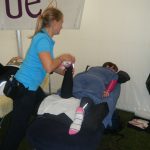Why have I trained in it? What is it? And how can you experience it for yourself?
The first time I received Reiki I was stressed, anxious and overwhelmed. The main and most striking effect of that session on me was relaxation, really deep relaxation. Relaxation the like of which I rarely felt, especially at that time in my life. I was able to fully switch off and float somewhere in between consciousness and sleep. To my surprise I saw bright colours and felt my body respond with twitches, tingles and digestive noises. I was given some insight into the energetic message received by the therapist. These resonated deeply, especially an image of a camel which reflected my solitude and stubborn self-sufficiency at that time and brought some tears to the surface. I left feeling safe and nurtured, calm, relaxed and energised.
Since that first session, Reiki has become a firm favourite way to step out of the daily stress, calm my nervous system and replenish my energy.
What is Reiki?
Reiki is a safe yet powerful form of energy work. Universal energy is channelled into the willing recipient using either gentle hands-on or hands hovering over different areas of the body. The recipient is usually lying comfortably, clothed and covered, eyes shut, and body supported. The energy moves to wherever in the body it is needed. Often both the therapist and the receiver will notice colours, sounds, images, symbols, memories, physical responses, or even smells during the session. These may be signs of the energy moving and can sometimes be interpreted into guidance.
Reiki helps to heal in the physical, emotional, mental, and spiritual levels, so it compliments the work that I do using sports massage on the physical body. In April 2023 I trained to Reiki level Two and since then you will have been receiving it during your massage sessions as it is flowing through my hands! It can’t be switched off!
Reiki can also be used at times when sports massage might not be appropriate. For example when an injury is very new and can’t yet be worked on. Reiki can provide calmness and relaxation and help reduce pain, without adversely effecting the injured area.
How can you experience it?
I am now offering you Reiki in three ways. As an add-on to your 60 or 90minute sports massage session – we will end your treatment with you lying on your back and I will quietly go into 30mins of Reiki. Or as a separate session of pure Reiki, lasting 45-60mins with time allowed for you to gently return to the present and share any reflections or insights. Or via Distance healing – believe it or not Reiki is powerful at a distance too, so we arrange a time for you to lie comfortably and I send you healing for 30-45mins, after which you can stay relaxed, sleep or get up. I will check in with you and you can share how you feel afterwards.
If experiencing Reiki yourself interests you or if you have any questions please do get in touch. And you can see what my clients are saying about Reiki treatments here.
 then tilt head to the right (ear to shoulder) feeling the stretch in the left side of the neck (vice versa for the other side). Extend the stretch by placing your right hand on your head and applying a little pressure. Transfer the stretch into the back and side of the neck by bringing your head forwards a little. Find the bit that feels tightest and hold that position.
then tilt head to the right (ear to shoulder) feeling the stretch in the left side of the neck (vice versa for the other side). Extend the stretch by placing your right hand on your head and applying a little pressure. Transfer the stretch into the back and side of the neck by bringing your head forwards a little. Find the bit that feels tightest and hold that position.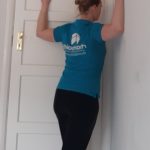 Pecs (chest) – using the corner of a room; raise your arms to the side and bend your elbows to 90degrees, place forearms and hands on the wall and gently press in towards the wall. Vary the position of the hands up and down to stretch the different areas of the pectoral muscles.
Pecs (chest) – using the corner of a room; raise your arms to the side and bend your elbows to 90degrees, place forearms and hands on the wall and gently press in towards the wall. Vary the position of the hands up and down to stretch the different areas of the pectoral muscles.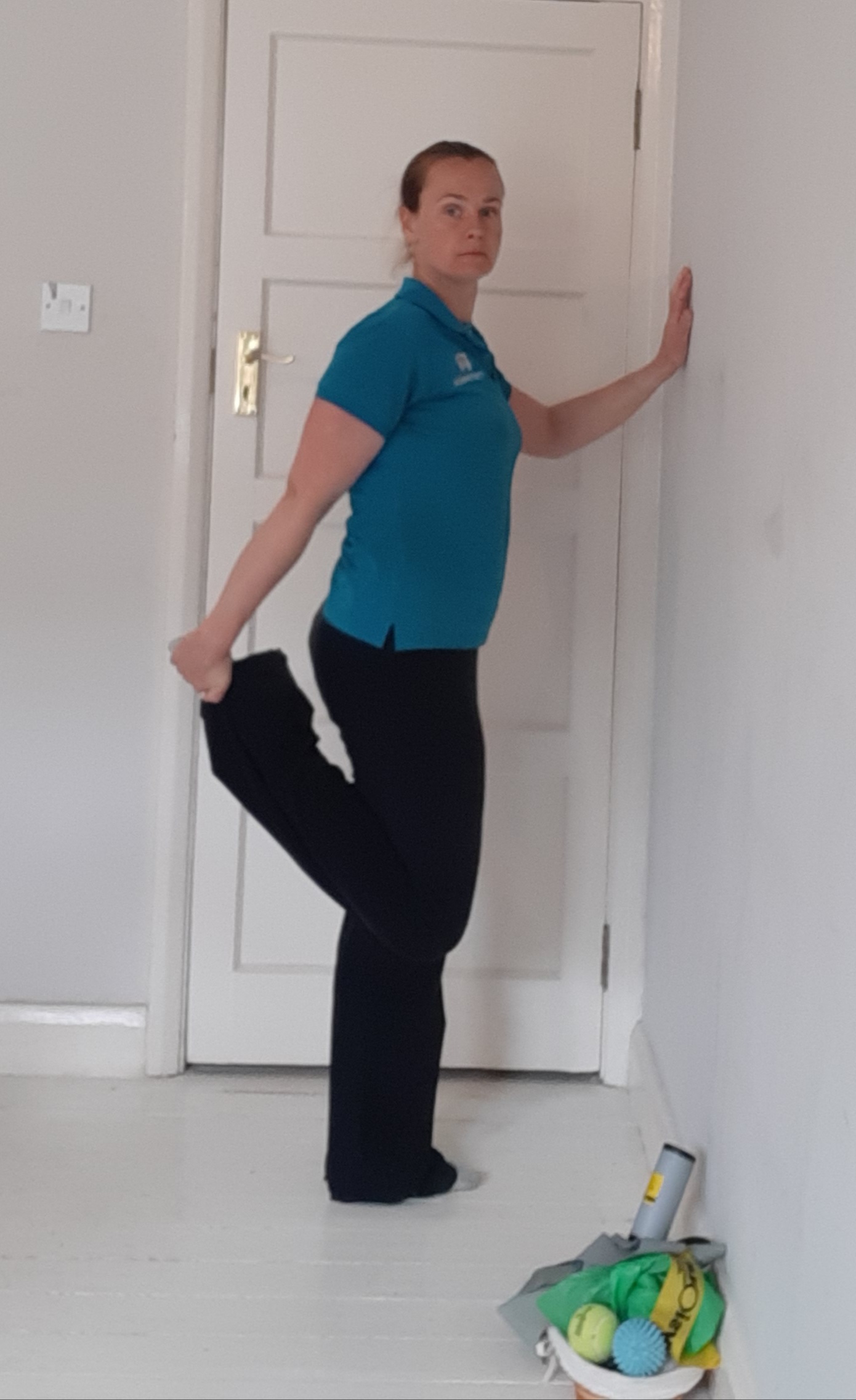
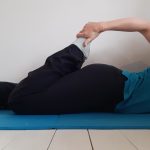
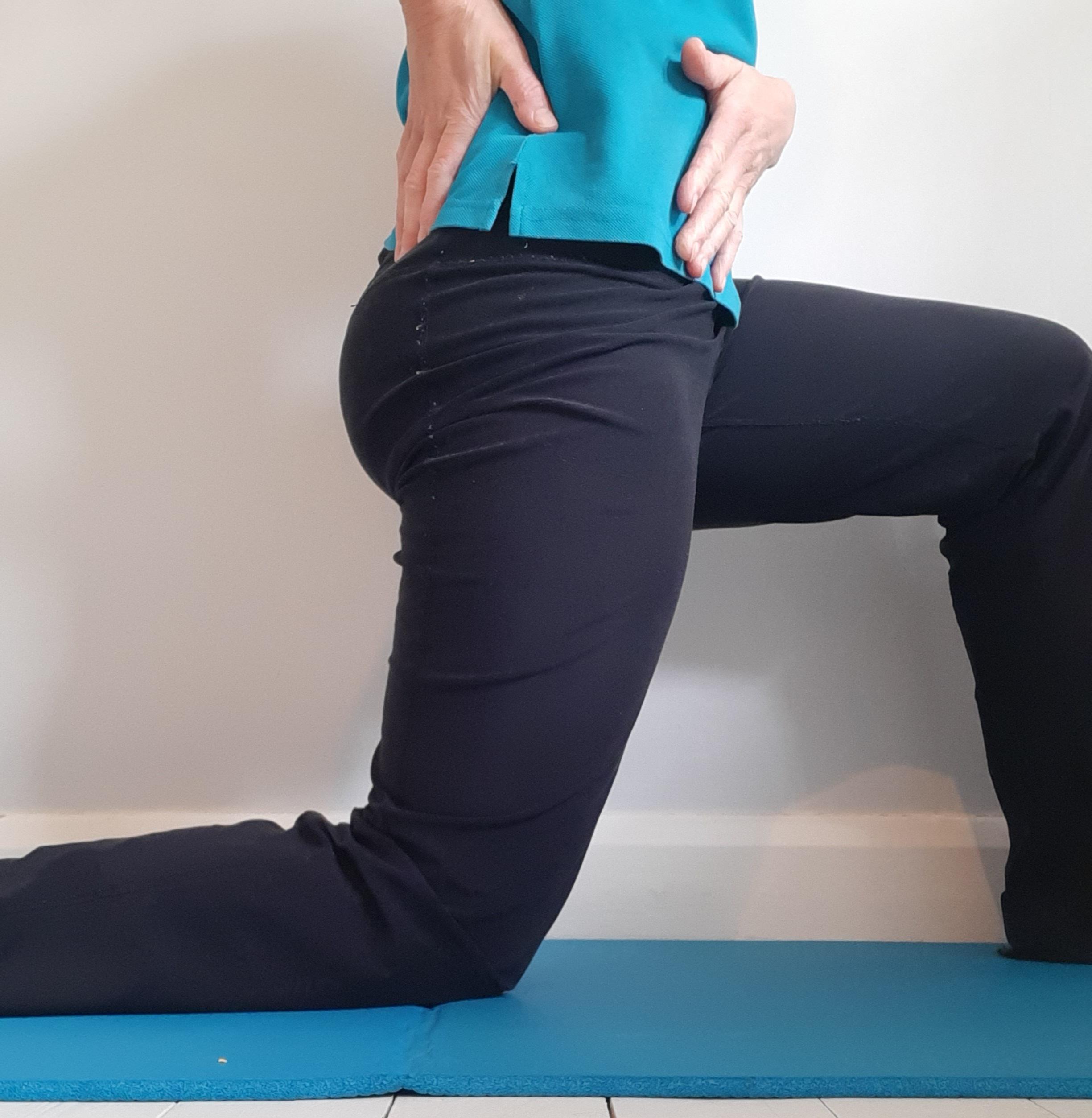 Flexors (deep into the front of the hip) – Start kneeling and take one foot forwards, creating a right angle at the knee. Keep your body tall and straight. To feel the stretch push forwards into the front knee, moving the front foot forwards so your knee doesn’t go past your toes. Don’t let your lower back arch – you will lose the stretch. Keep your tummy zipped up and low back straight. You may feel the stretch in the upper part of your thigh and deep into the front of the hip.
Flexors (deep into the front of the hip) – Start kneeling and take one foot forwards, creating a right angle at the knee. Keep your body tall and straight. To feel the stretch push forwards into the front knee, moving the front foot forwards so your knee doesn’t go past your toes. Don’t let your lower back arch – you will lose the stretch. Keep your tummy zipped up and low back straight. You may feel the stretch in the upper part of your thigh and deep into the front of the hip.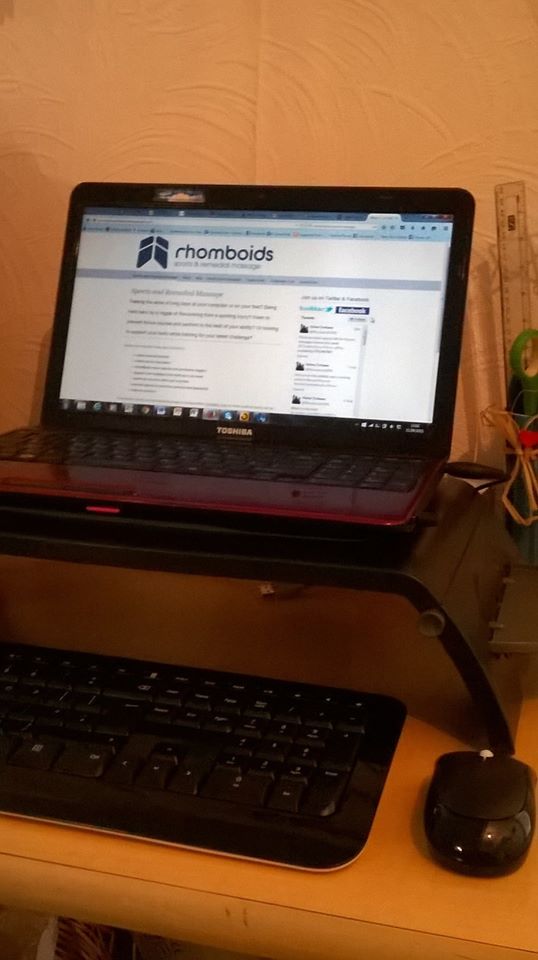 the table. Don’t work from a coffee table, while sitting on the sofa – your back, neck and hips will not love this!
the table. Don’t work from a coffee table, while sitting on the sofa – your back, neck and hips will not love this!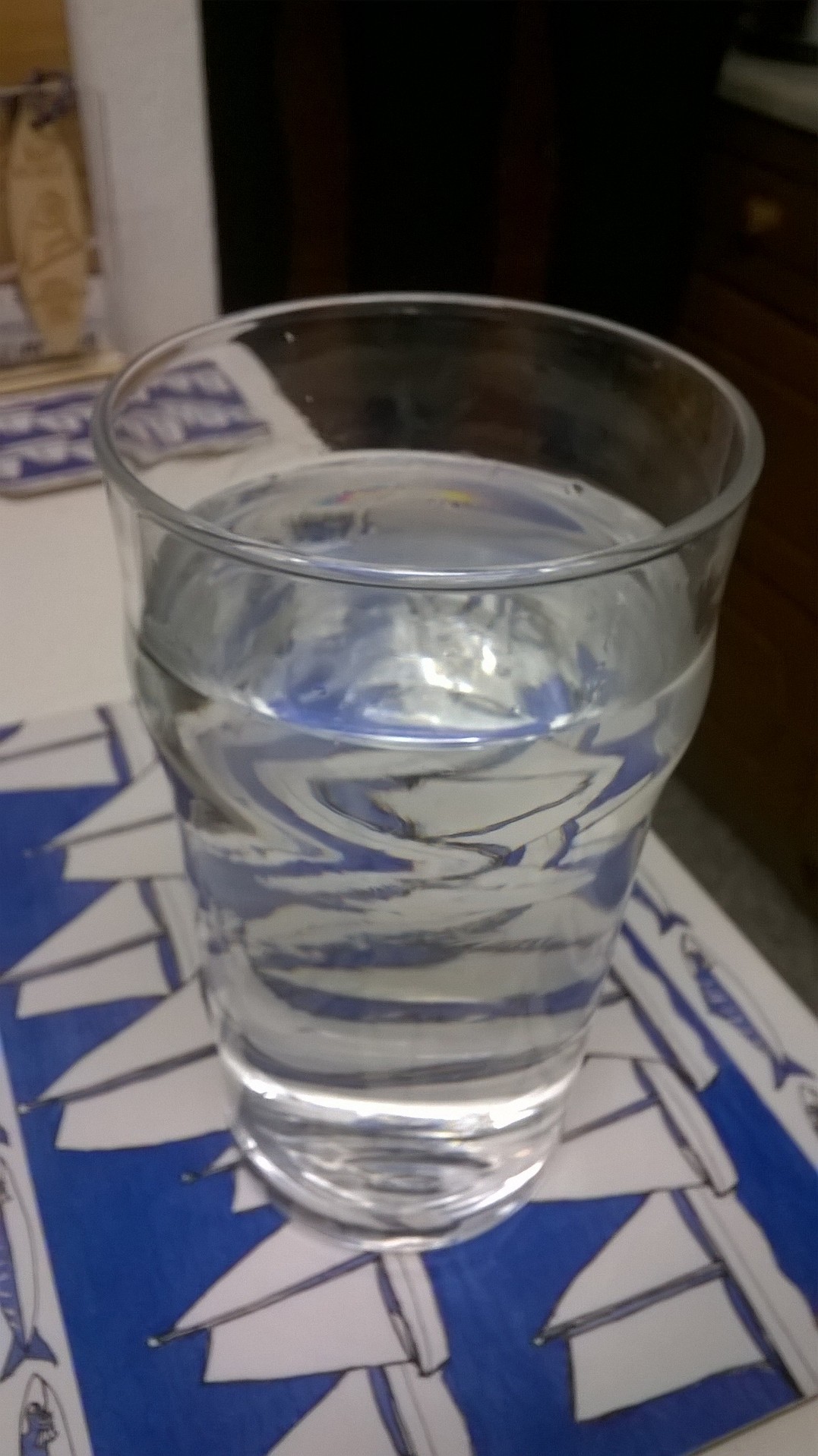 ur watch when it tells you to move.
ur watch when it tells you to move.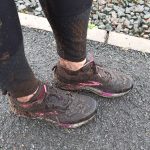
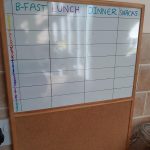
 self-clean!
self-clean!